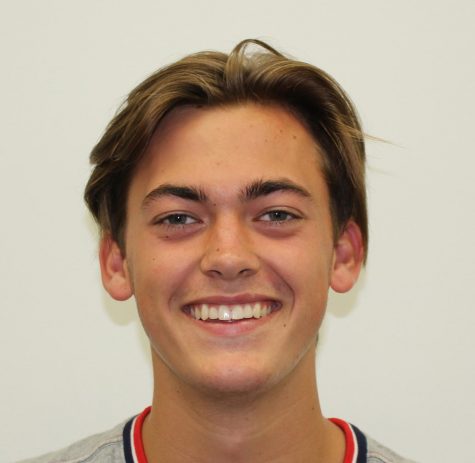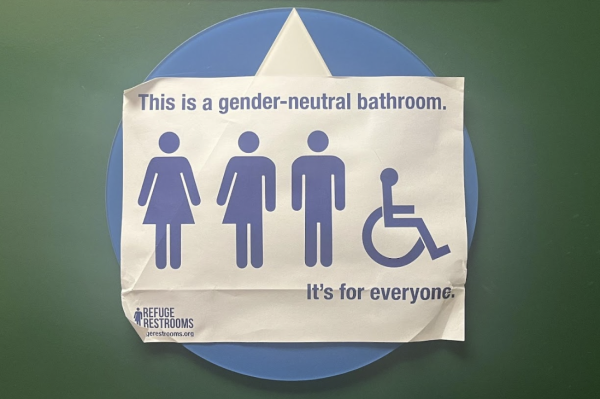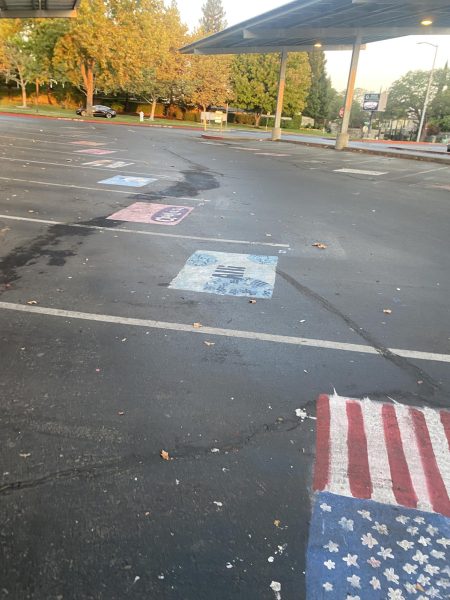GBHS uses survey to bridge its gaps
Participants question whether there is enough value for students
More news stories
SPENCER COVA/Gazette/GBT.org photo
GBHS senior Josh Yeargin takes an online survey in class.
It is widely accepted that educational opportunities for students should be equal, that the success of students should not be determined by their social class, race or their circumstances at birth.
Yet, while African-American, Latino and low-income students are about as likely as their white or upper-income peers to attend schools with Advanced Placement and International Baccalaureate courses, at least 640,000 of those who could handle the rigor miss out on taking those classes each year, according to Equal Opportunity Schools.
EOS is a third-party organization that seeks to increase the enrollment in AP and IB courses for low-income students and students of color, giving them more opportunity to excel in high school, college and beyond. EOS collaborates with leaders within schools, districts, counties, states and on the national level.
Although Granite Bay High School is a part of an affluent community and has relatively few low-income students, GBHS doesn’t avoid the inequality-of-opportunity problem. GBHS has partnered with EOS for four years by administering a survey created by EOS to the school’s student and teacher population.
“The survey provides a ton of valuable information to the school,” said Ron Severson, an EOS superintendent in residence and the recently retired superintendent of the Roseville Joint Union High School District, in an email. “It helps identify students who are not currently taking AP or IB classes who have a good chance of being successful.”
There is not systemic inequality at GBHS – the school doesn’t set requirements on who can or cannot take AP or IB classes. The inequality at GBHS comes when capable students aren’t pushed or encouraged into taking classes that would most benefit them. The EOS survey allows administrators to see who the students who aren’t receiving this support might be.
“Computer algorithms produce a list of 50 or so kids that are either low income or part of a target group that could be successful but hasn’t been invited to upper-level courses,” GBHS assistant principal Jessup McGregor said.
The survey not only identifies the students who aren’t maximizing their potential, but it also measures what might be holding them back.
“It helps identify barriers that students encounter that keep them from signing up for these classes,” Severson said. “It is everything from communication, to fear, to wondering whether they will be accepted by other students in the courses.”
Once the targeted students have been identified, it is the role of the school’s administration to step in and and make changes they feel is best.
“A lot of times students will feel like I’m not good enough for that class or I don’t look like the kids in that class, there’s a lot of different reasons why kids wouldn’t enroll,” McGregor said. The goal is that we meet from those kids… we want them to know that they can be successful.”
Although these well-intentioned efforts do not come without drawback. Each year GBHS chooses a day to carve out a time period of 20-30 minutes in order to provide all students a fair opportunity to take the survey.
“When the whole class is now going to miss time, that’s when it gets really difficult, that part will always be a pain,” said AP United States history teacher Brandon Dell’Orto.
AP U.S. history is a fast-paced, rigorous class that barely has enough time to prepare students for the AP test. A block of time taken out of any period can set the class back a whole day – which students can hardly afford.
“I think the frustrating part isn’t the EOS survey and what it’s trying to do, but rather no matter what, we end up having three surveys in a row of sorts,” Dell’Orto said. “No matter what you do, it is really hard to fit it in.”
Although the survey is aimed for students who are not enrolled in AP or IB courses, the entire school population still takes the survey. Even entire AP and IB classes themselves.
“You might be a kid who has already taken four AP classes and you’re wondering what’s the point here,” McGregor said.
Although many would say they agree with the purpose and intention of the survey, not all think it should be implemented at GBHS school.
“I think that data is good but I don’t think it should replace the personal experience through our own counselors and teachers,” Dell’Orto said.
Whether students and teachers agree or disagree that the survey should be administered at GBHS, there is one bottom line – it creates in impact.
“Granite Bay has closed the equity gap – only 1-2 percent of high schools in the country can say that,” Severson said. “Each year, we have reached 30-50 students who we were missing historically. Those students have a chance to compete better for college.”
Since focusing on closing the gap in enrollment rates of advanced classes between non-ethnic, upper-class students and ethnic low-income students, GBHS has found significant success.
“In the last six years, we have closed that gap to a statistically insignificant level,” McGregor said. “Our housing rates have dipped, yet the amount of students taking (AP or IB) tests has increased.”
Although GBHS still has variability in the rate between race and social class and AP class enrollments, the variability is about as minimal as a public school can get.
“Granite Bay provides an opportunity to compete for college admission to more kids than most schools in the nation,” Severson said. “EOS and the survey has been a significant help for that mission.”

Spencer is a senior, and this is his second year on the Gazette/GBT.org staff. He is one of five co-editors-in-chief for 2018-19.









